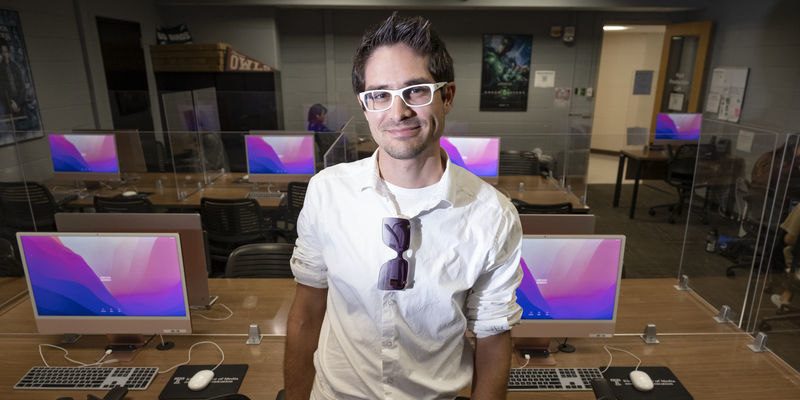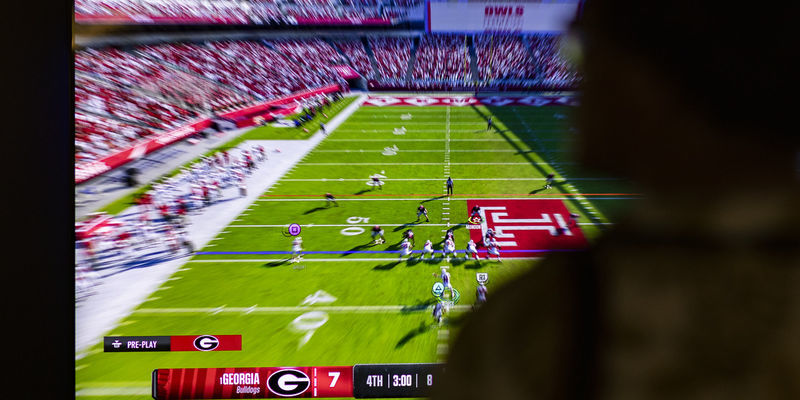‘Flappy Bird’ to return after a 10-year hiatus: the true story behind the world’s most viral mobile game
It was announced on Sept. 12 that Flappy Bird, the world’s most downloaded mobile game of 2014, will return to Android and Apple mobile devices in 2025.

It was recently announced that Flappy Bird, the world’s most-downloaded mobile game in January 2014, will return to the App Store and Google Play after a 10-year hiatus.
The premise of Flappy Bird’s endless runner game is simple: Tap the screen to navigate an 8-bit bird character named Faby through the gaps between green pipes without hitting them.
The seemingly simple mobile game resonated with millions of players worldwide and gained 90 million downloads at its zenith. Yet the viral game abruptly vanished overnight after its creator Dong Nguyen removed it from app stores in 2014.
Flappy Bird is expected to be released across multiple platforms by 2025, but Nguyen won't have any involvement in its development. He recently tweeted, “I have no related [sic] with their game. I did not sell anything.”
So, will Flappy Bird have market success in 2025? What led to the rise, ban and return of the game? Why does the original creator not have any involvement with the new game? What causes the addictive nature of mobile games like Flappy Bird?
Thomas Sharpe is an adjunct assistant professor at Temple University’s School of Theater, Film and Media Arts. Sharpe teaches Video Game and Playable Media Design, a course that focuses on video game development and distribution within various digital platforms. He is also the director of Gossamer, an indie game studio he helped launch in 2015. Gossamer’s debut game SOLE was featured at the Smithsonian American Art Museum, PAX Rising and the Indie MEGABOOTH.
Temple Now caught up with Sharpe to get his thoughts on what led to the market success and end of Flappy Bird and whether its enhanced remake will succeed in the current mobile game market.
 Thomas Sharpe teaches a video game production class, Video Game and Playable Media Design, at Temple’s School of Theater, Film and Media Arts. (Photography By: Joseph V. Labolito)
Thomas Sharpe teaches a video game production class, Video Game and Playable Media Design, at Temple’s School of Theater, Film and Media Arts. (Photography By: Joseph V. Labolito)
Temple Now: What is Flappy Bird and what inspired the game?
Thomas Sharpe: Flappy Bird is a mobile game with simple graphics reminiscent of early 8-bit gaming that was released in 2013 by a solo Vietnamese developer Dong Nguyen. It’s an endless runner game with a one-button gaming design to control a bird to fly through gaps between green pipes without hitting them for as long as you can. The gameplay was inspired by the challenge of bouncing a ping pong ball on a paddle as many times as you can. The motion of Flappy Bird follows a similar concept of controlling a bird to flap up and down as many times as you can. It has the foundation of many platformer games like Doodle Jump or Super Mario Bros. of timing jumps and when to press buttons. These basic games we like to play practice dexterity and are stimulating similarly to when people play sports or with toys, which translate well into a video game format.
TN: What led to the viral rise of Flappy Bird?
TS: On average, tens of thousands of mobile games are released each month, so Flappy Bird is a fairytale story of striking it big in the online lottery of mobile games. Nguyen enjoyed creating mobile games as a hobby. It only took him three days to code and design Flappy Bird, which initially struggled to gain market success but suddenly went viral several months after its release. The game transformed Nguyen’s life. He reportedly made more than $50,000 a day in-app advertisements and sales after the game topped all mobile app charts at the end of January 2014. I believe he had such viral success because he made the gameplay and design simple and accessible for even a passive audience to start playing without needing much explanation on how to play, which resonated with millions of players worldwide.
TN: Why did Flappy Bird become so addictive for players?
TS: Because Flappy Bird is an infinite runner game with no end game, yet a self-imposed challenge to see how far you can go. You may watch somebody play and say, “Oh I can score higher than that all day.” Let us say 10 seconds into the game you are doing well but then fail because you hit one of the green pipes. It’s tempting to restart the game and try over and over again because players believe they can do better, so it gets competitive. Some may think there is a negative emotional reaction when you lose, but it’s actually a cathartic experience that players crave. The genre of “rage baiting” is popular within the game-streaming world on YouTube and Twitch because it elicits a strong, primal and emotional reaction from people playing a game, which leads to great entertainment. Also, Flappy Bird is simple: You don’t have to worry about learning advanced controls or problem-solving. Players just have to press the screen with one button to control a bird to flap up or down, which has so much nuance awarded because of that. It’s a passive game that doesn’t require much physical activity that someone can enjoy playing when watching a TV show, commuting and or doing something else in addition to what is going on in their life. Nguyen understood the psychology of video game design to make an experience that can be addictive and go incredibly viral.
TN: What led to the fall of Flappy Bird, which seemed to have vanished overnight?
TS: At its height of popularity, there was a lot of criticism across gaming outlets and the general public who accused Nguyen of stealing and leveraging the intellectual property of Super Mario Bros.’s design language of green pipes and other graphics to succeed. He did capitalize on the recognizability of the game’s design to success, yet he just wanted to pay homage to the Mario product as a fan. He went from a simple private life into this global tech celebrity fame that made him uncomfortable from the paparazzi and news outlets invading his privacy. He also felt pressure from parents who said the game’s addictive nature ruined their children’s productivity. At the peak of its virality, Nguyen announced he would remove Flappy Bird from the app stores because he felt guilty that the game’s addictive nature ruined lives. The game was removed from app stores on Feb. 10, 2014, yet that didn’t stop Flappy Bird enthusiasts. Hundreds of Flappy Bird clones immediately appeared in app stores and people were selling Flappy Bird-equipped phones for thousands of dollars on eBay.
TN: What do you expect from the updated version of Flappy Bird in 2025 and why won’t the original creator have any involvement?
TS: Nguyen lost the Flappy Bird trademark rights due to claims of abandonment. Gametech Holdings LLC was granted the rights to Flappy Bird after filing a motion in court for ownership. Gametech Holdings then sold the game’s trademark to the Flappy Bird Foundation, who described themselves as, “A dedicated team of passionate fans and industry veterans who share a deep love for Flappy Bird.” The new game will be more of a sequel with new game modes and character designs. It also has the potential to have new monetization strategies, including loot boxes, season passes and other game features that can be accessed directly with real-world money. I am skeptical whether the additional systems or microtransactions to evolve the game’s design could complicate things. Simplicity was a huge part of its original market success. There was a high volume of nostalgic interest revolving around the new game’s announcement on social media, so it will be interesting to see how the audience responds once it is released.
TN: Final question. For students interested in the mobile gaming industry, what can they learn from your video game production class at Temple?
TS: We have the infrastructure for aspiring game developers to learn in Philadelphia. In my class at Temple, students learn how to use the powerful tools within Unreal Editor for Fortnite, a PC application to design, develop and publish games directly into Fortnite. They learn to create experiences using art, animations and audio within Fortnite as the foundation where they can publish content to the millions of daily users. We help put students in a position to publish experiences and have consumers from the real world play their games.
Also read
- Temple in the Spotlight: The School of Theater, Film and Media Arts is part of the Center for the Performing and Cinematic Arts at Temple University and leads students to break barriers in artistic media.
- Esports Certificate Program: Temple University offers an esports certificate program within the School of Sport, Tourism and Hospitality Management, designed for students interested in learning esports business and managerial elements. The five-course program focuses on industry trends, legal challenges, unique topics in sport and recreation management, social media management, and fan engagement and revenue production.
- Become an Owl: Learn more about applying for one of our undergraduate, graduate or professional programs.


